Dr. Phil Zeltzman’s Blog
Why do we do what we do?
Have you ever wondered why vets and their nurses do what they do?
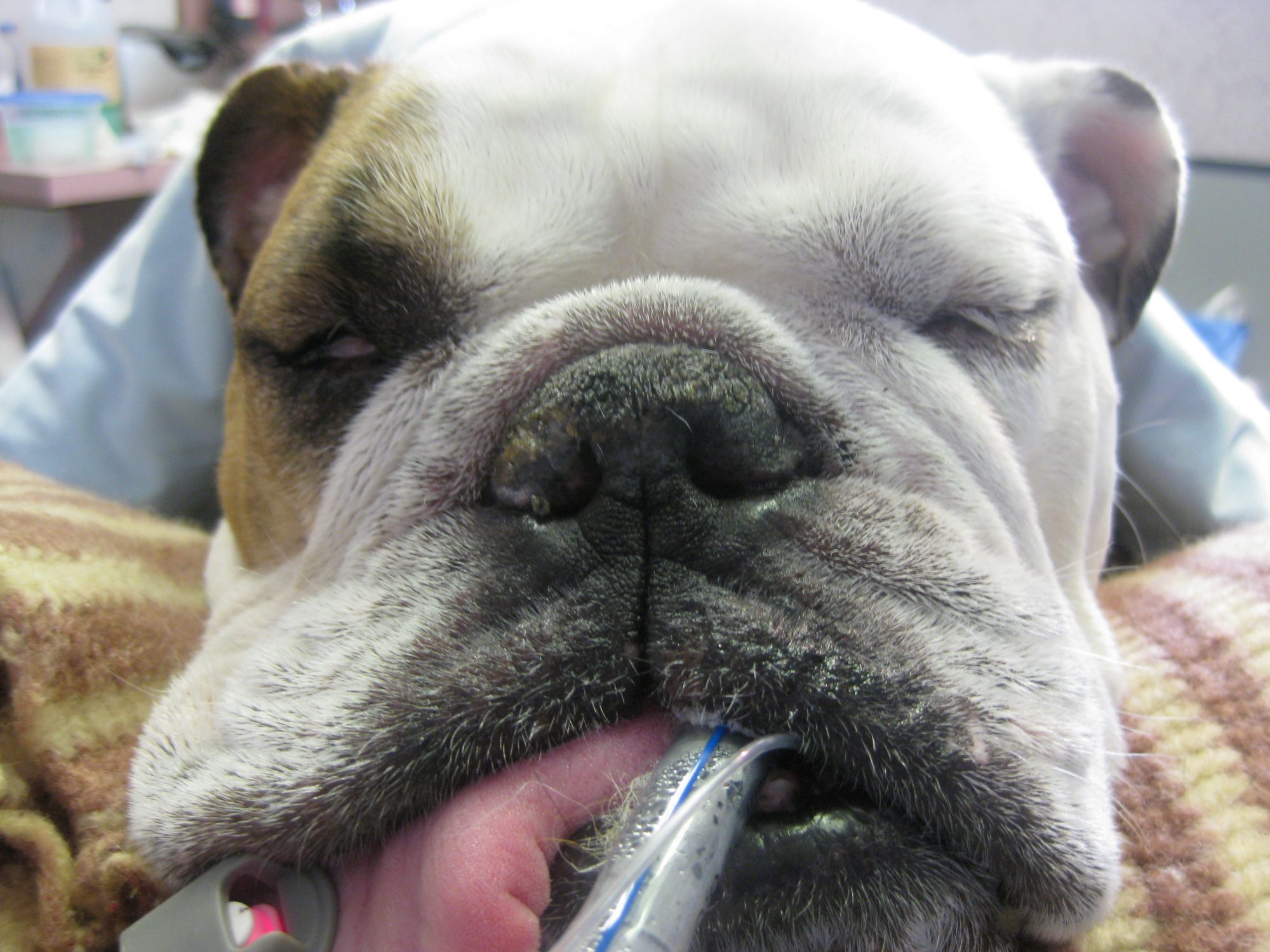
A Bulldog under anesthesia
Here are 5 common things we do around surgery time, and why we do them.
1. Why do we do blood work?
We perform preop blood work to make sure that the patient’s organs are healthy and functioning properly. We mostly look at the immune system, the red blood cells, the clotting system, the liver and the kidneys.
If one of these organs doesn’t work properly, it can dramatically affect the safety of anesthesia or surgery. In some cases, we may need to treat or “stabilize” the patient before we even consider surgery.
Many drugs are processed by the liver and the kidneys, so if they are not working well, the drugs will stay in the patient’s system for much longer than normal and could lead to complications such as a delayed recovery.
2. Why do we place an IV catheter?
We place an IV catheter for several reasons:
* To “stabilize” a patient before surgery, for example to correct abnormal electrolytes.
* To give a tranquilizer, before or after surgery.
* To give IV pain medications.
* To give IV antibiotics.
* To give IV fluids.
* To give IV emergency drugs if needed.
3. Why do we give IV fluids?
We give IV fluids for several reasons:
* To correct abnormal electrolytes (to increase or decrease them).
* To dilute some IV drugs.
* To make sure the patient is well hydrated.
* To make sure the blood pressure is high enough.
* To make sure we have easy access to a vein in case we need to give emergency drugs.
4. Why do we give IV antibiotics?
Under anesthesia, the patient’s immune system is weakened. Since neither the skin nor the air nor the environment is completely sterile, bacteria always end up in the surgical site. To prevent an infection, we give antibiotics before, during and after surgery.
Some organs are riskier than others: there are more, and more dangerous, bacteria in the intestine (think about removing a rock or a tennis ball from the intestine), than on the skin (think about removing a skin tumor).
5. Why do we give IV pain medications?
We give pain meds before anesthesia because it sedates or relaxes the patient. Interactions and minor procedures (e.g. placing an IV catheter or taking X-rays) are therefore less stressful.
In addition, it is better to give pain meds before the surgery starts because a smaller amount is needed. If we waited until the patient has been “stimulated” during surgery, we would need a bigger dose.
Ultimately, these 5 steps are designed to make anesthesia and surgery safer for your pet. This is our primary goal.
Phil Zeltzman, DVM, DACVS, CVJ, Fear Free Certified

Dr. Phil Zeltzman is a traveling veterinary surgeon in Pennsylvania & New Jersey. An award-winning author, he loves to share his adventures in practice along with information about vet medicine and surgery that can really help your pets. Dr. Zeltzman specializes in orthopedic, neurologic, cancer, and soft tissue surgeries for dogs, cats, and small exotics. By working with local family vets, he offers the best surgical care, safest anesthesia, and utmost pain management to all his patients. Sign up to get an email when he updates his blog, and follow him on Facebook, too!
German Shepherd needs surgery to catch his breath
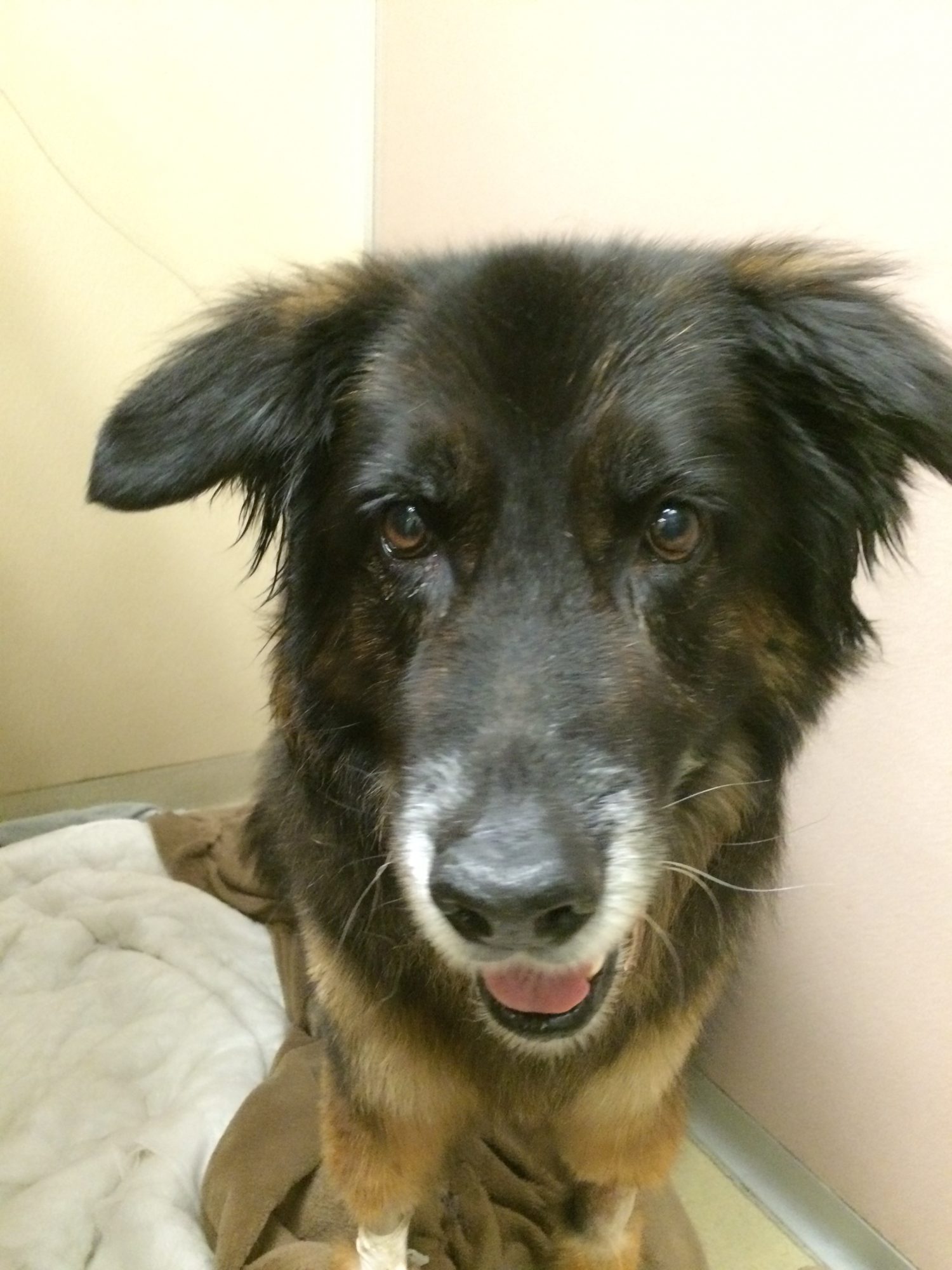 Yuengling, a 7-year-old German Shepherd, had swelling along the left side of his tongue. The mass was so large that Yuengling was having difficulty breathing.
Yuengling, a 7-year-old German Shepherd, had swelling along the left side of his tongue. The mass was so large that Yuengling was having difficulty breathing.
This is called a ranula, or a mucocele. It’s a large pocket of saliva often formed after trauma to a salivary gland. I performed surgery at Berks Animal Emergency & Referral Center and cut the pocket open and sutured the edges together.
But before I could close the incision, the thick, ropy saliva needed to be aspirated. You can see the mass and part of the surgery in the video below.

Dr. Phil Zeltzman is a traveling veterinary surgeon in Pennsylvania & New Jersey. An award-winning author, he loves to share his adventures in practice along with information about vet medicine and surgery that can really help your pets. Dr. Zeltzman specializes in orthopedic, neurologic, cancer, and soft tissue surgeries for dogs, cats, and small exotics. By working with local family vets, he offers the best surgical care, safest anesthesia, and utmost pain management to all his patients. Sign up to get an email when he updates his blog, and follow him on Facebook, too!
Jack Russell saved after he snacks on carpet
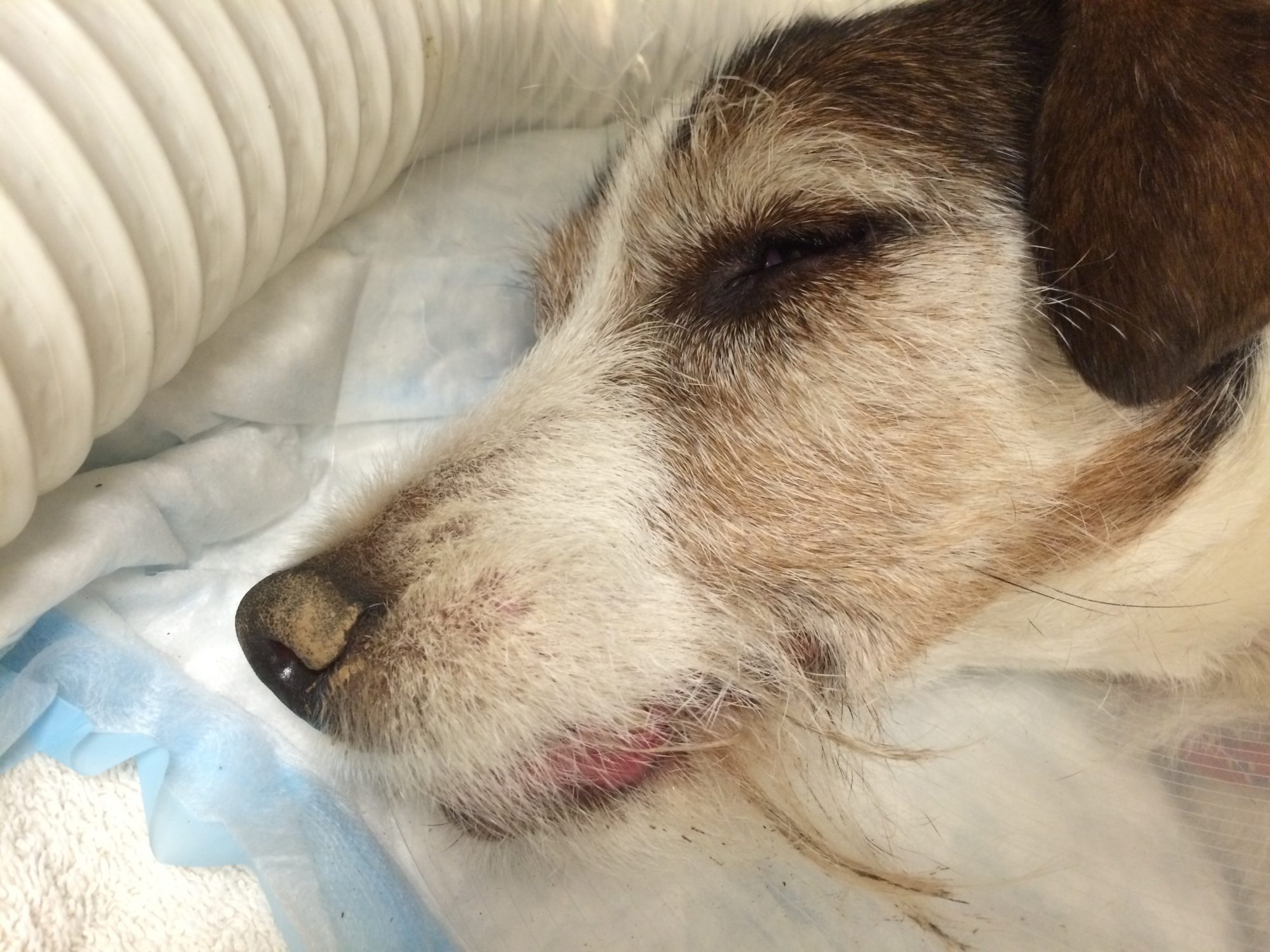 Sam is a 12-year-old Jack Russell, who had been vomiting and was lethargic for a few days. X-rays and an ultrasound revealed that he had swallowed a foreign body. There was a suspicion that he chewed pieces of carpet.
Sam is a 12-year-old Jack Russell, who had been vomiting and was lethargic for a few days. X-rays and an ultrasound revealed that he had swallowed a foreign body. There was a suspicion that he chewed pieces of carpet.
Carpet is really made of a very long string, so the risk was that Sam had eaten what is called a “linear” foreign body. Linear foreign bodies can be deadly if they cut into the intestine.
Sam was taken to surgery at Berks Animal Emergency & Referral Center. Two foreign bodies could be felt: one in the stomach and one in the small intestine. You can watch the removal of the string from the stomach and the intestine below. The video does contain graphic footage of a surgical procedure, so you may want to skip it if you’re sensitive to that type of footage!
Although we expect puppies (and kittens) to eat things they shouldn’t, older pets should know better. Most of the time, when an adult swallows a foreign body I suspect there is an underlying medical condition. I always take biopsies of the stomach and the intestine during surgery to check. Sure enough, Sam’s biopsies revealed a common condition called Inflammatory Bowel Disease (IBD). This disease can and should be treated to make him feel better and to hopefully prevent him from swallowing another foreign body.
Happily, Sam recovered nicely after surgery! Make sure to doggy proof your house to reduce the risk your pet will eat something dangerous. And if your dog or cat is vomiting, don’t wait! Take him to the vet to get it checked out.
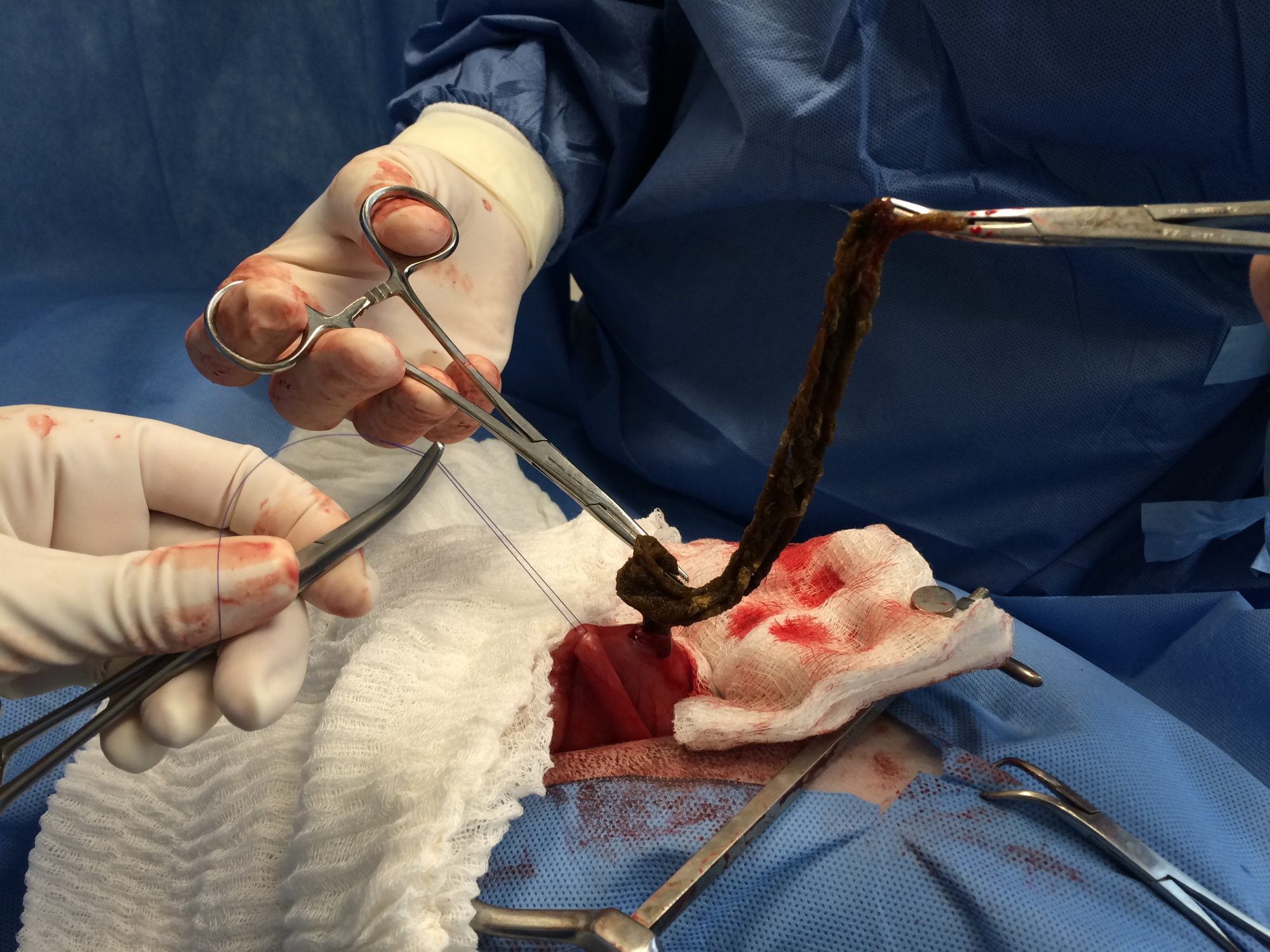 Removing the string from the stomach. |
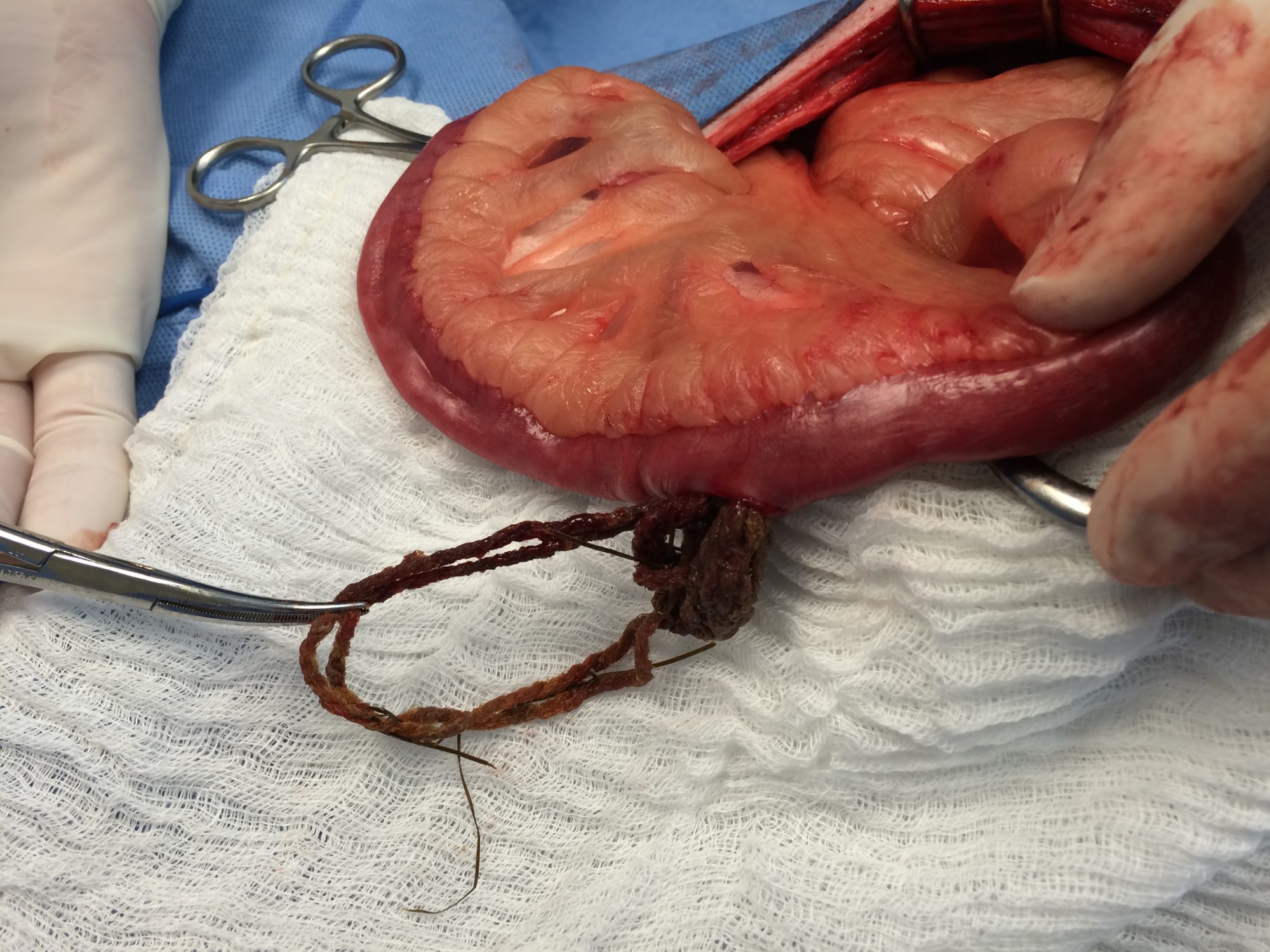 Removing the string from the intestine. |
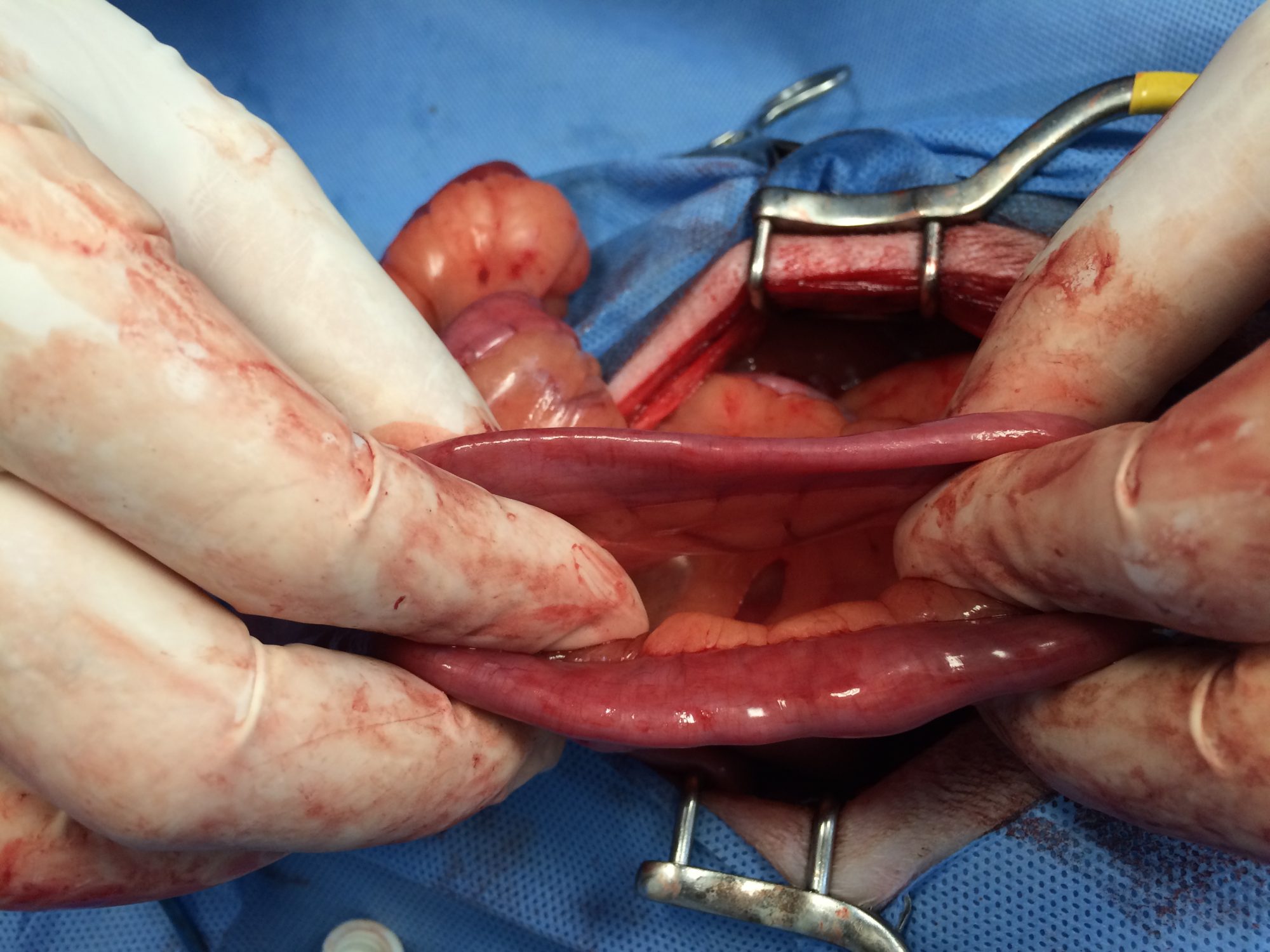 The thin loop is normal, but the thick loop has IBD. |
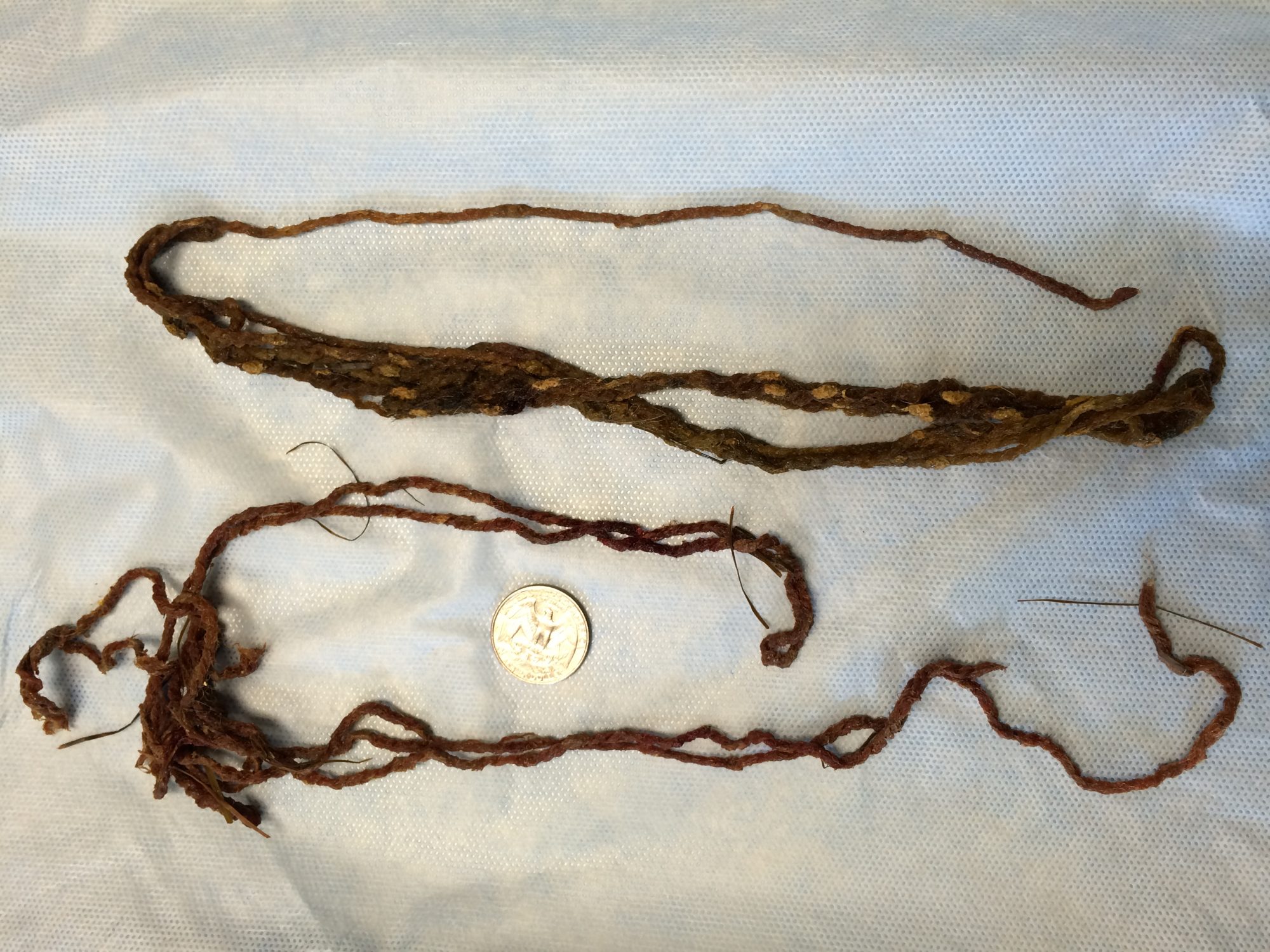 Here’s all the string Sam managed to eat. |

Dr. Phil Zeltzman is a traveling veterinary surgeon in Pennsylvania & New Jersey. An award-winning author, he loves to share his adventures in practice along with information about vet medicine and surgery that can really help your pets. Dr. Zeltzman specializes in orthopedic, neurologic, cancer, and soft tissue surgeries for dogs, cats, and small exotics. By working with local family vets, he offers the best surgical care, safest anesthesia, and utmost pain management to all his patients. Sign up to get an email when he updates his blog, and follow him on Facebook, too!
Leia: the Havanese that can’t be kept down
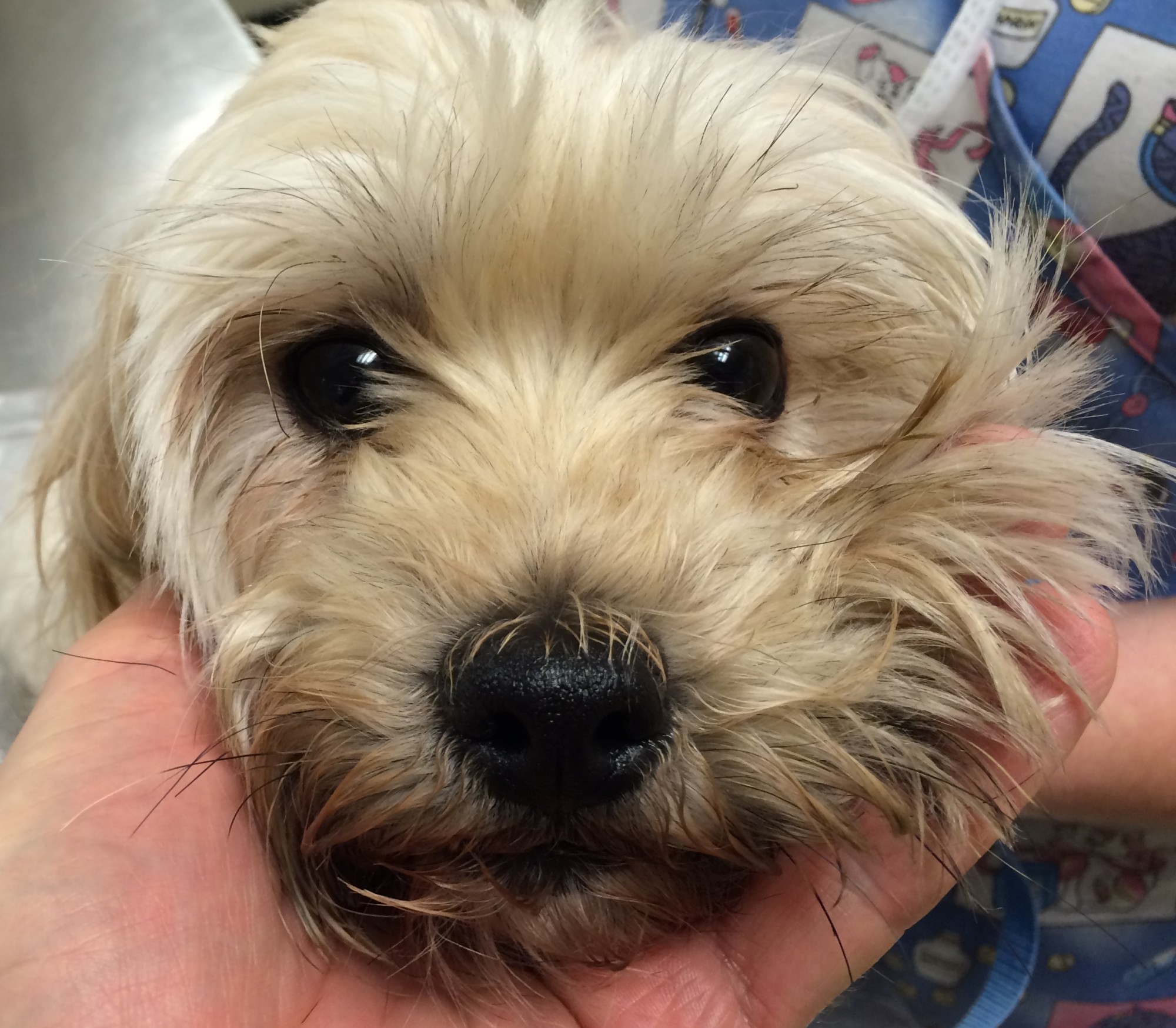 Leia is a 4 year-old female Havanese who just so happens to be cuter than a button.
Leia is a 4 year-old female Havanese who just so happens to be cuter than a button.
She was experiencing back pain and right hind leg weakness, in spite of pain medication and cortisone. An MRI showed a slipped disc in the middle of her back, between T13 and L1.
Leia had spinal surgery at Berks Animal and Emergency Referral Center to remove the slipped disc. This is a delicate surgery, that can paralyze a dog, if only temporarily.
Leia did great! Just a few hours after surgery, she went outside for a little walk. Nothing is going to stop Leia!
Back pain can be treated with pain medications and a slipped disc can be treated with cortisone, but studies show that in 80% of cases, these dogs actually need spinal surgery.
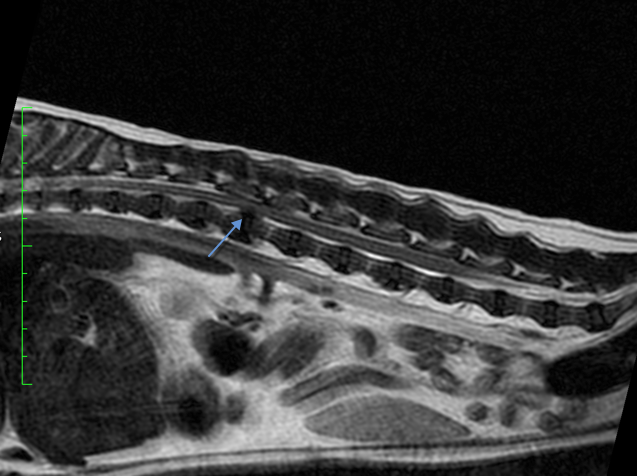
The arrow is pointing at the slipped disc.

Dr. Phil Zeltzman is a traveling veterinary surgeon in Pennsylvania & New Jersey. An award-winning author, he loves to share his adventures in practice along with information about vet medicine and surgery that can really help your pets. Dr. Zeltzman specializes in orthopedic, neurologic, cancer, and soft tissue surgeries for dogs, cats, and small exotics. By working with local family vets, he offers the best surgical care, safest anesthesia, and utmost pain management to all his patients. Sign up to get an email when he updates his blog, and follow him on Facebook, too!
Fix your dog’s laryngeal paralysis with tie back surgery
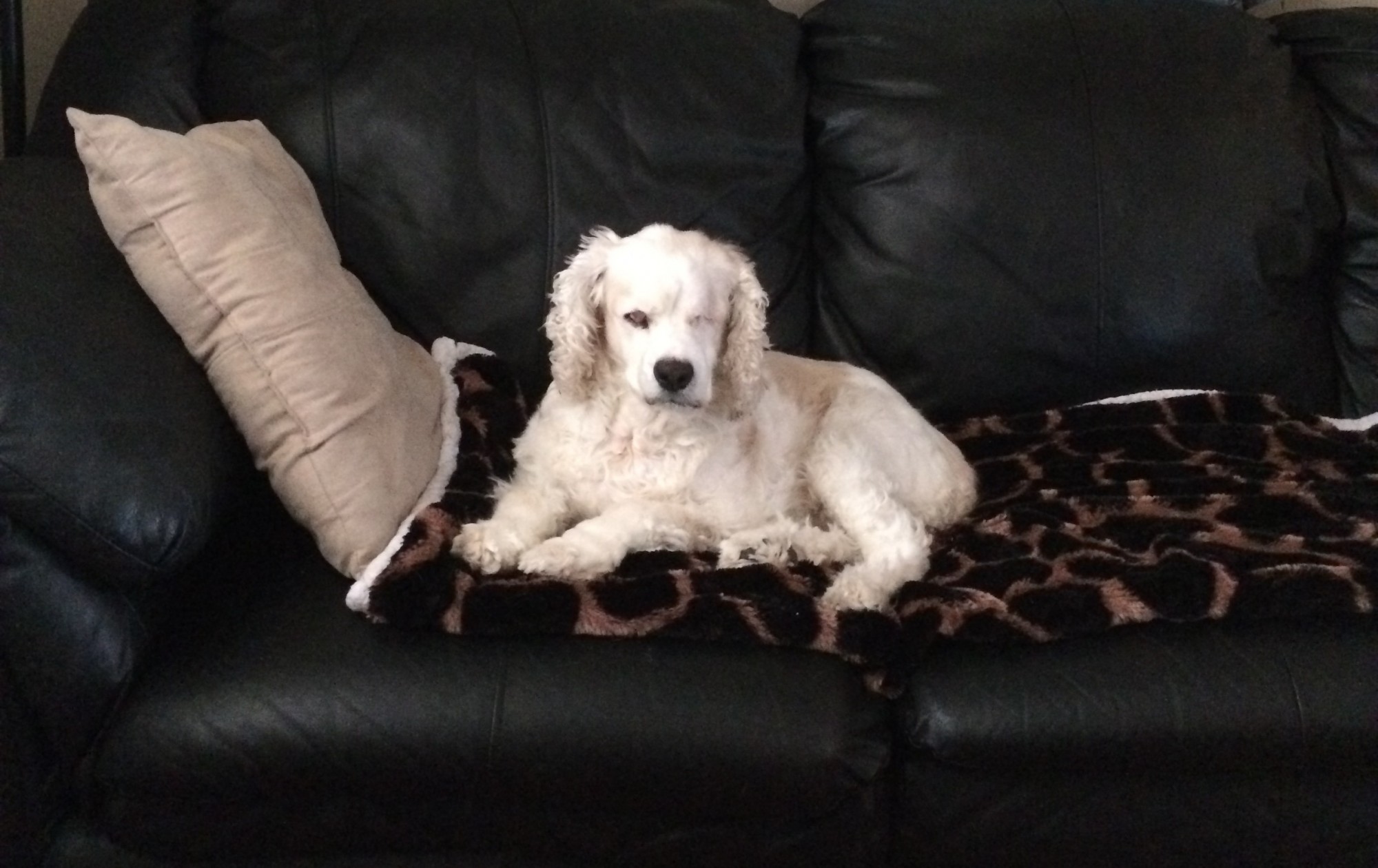 Matches is a 13 year old female Cocker Spaniel who, as you can see, rules the home from her royal couch.
Matches is a 13 year old female Cocker Spaniel who, as you can see, rules the home from her royal couch.
She previously had to have her left eye removed because of glaucoma, but she was referred to me because she had difficulty breathing. Her family vet diagnosed her with an unusual condition in a Cocker: laryngeal paralysis, or lar par.
This was very surprising. It’s a common condition in Labradors, but rare in other breeds such as Cockers.
Lar par is a stressful ailment where the two folds of the larynx (or voice box) do not open and close as the patient breathes in and out. The folds remain closed – paralyzed – and the patient literally suffocates. This can be fixed with “tie back” surgery, which involves placing 2 strands of heavy nylon to open the left side of the larynx.
It’s a delicate surgery, but typically successful as it opens the airway so that the patient can breathe. Matches recovered very nicely and quickly from surgery at Blairstown Animal Hospital in New Jersey. So far, she is doing great.
Below, you can see a preop and postop video of the larynx.
In the “before” section, don’t be fooled by the movement at the bottom of the folds! These are the vocal cords, which do nothing for breathing. Look at the top of the folds, and you will see that they do not move, even when she tries to breathe in.
In the “after” portion, the left side of the throat (which appears on the right side of the screen!) is open to allow air from going in.
It’s very important for veterinary professionals to never assume! I was surprised to hear from my colleague that he had a Cocker with laryngeal paralysis, but sure enough, that’s what she had.

Dr. Phil Zeltzman is a traveling veterinary surgeon in Pennsylvania & New Jersey. An award-winning author, he loves to share his adventures in practice along with information about vet medicine and surgery that can really help your pets. Dr. Zeltzman specializes in orthopedic, neurologic, cancer, and soft tissue surgeries for dogs, cats, and small exotics. By working with local family vets, he offers the best surgical care, safest anesthesia, and utmost pain management to all his patients. Sign up to get an email when he updates his blog, and follow him on Facebook, too!

